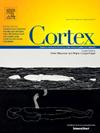Functional differentiation between cerebral and cerebellar white matter in word decoding and automaticity: a diffusion MRI study
IF 3.2
2区 心理学
Q1 BEHAVIORAL SCIENCES
引用次数: 0
Abstract
The involvement of both the cerebrum and the cerebellum in reading processes has been acknowledged in previous research, yet their specific contributions remained unclear. In this study, we employed machine learning techniques and diffusion tensor imaging (DTI) to elucidate the respective roles of the cerebrum and the cerebellum in reading in adult readers (n = 109, 63 females, mean age = 21 years). We discovered that fractional anisotropy (FA) across the entire brain effectively differentiated good readers from those with poorer reading abilities. Furthermore, compared to the FA within the cerebellum, FA within the cerebrum demonstrated superior performance in identifying readers with better word decoding abilities. In contrast, compared to FA within the cerebellum, the model based on cerebro-cerebellar FA was more effective in distinguishing readers with varying levels of automaticity. These findings were validated through diverse methods, including brain-behavioral association analysis, support vector machine algorithms, and logistic regression. Our results provide evidence for a functional differentiation between the cerebrum and the cerebellum in word reading. Specifically, cerebral white matters are closely associated with word decoding abilities, whereas cerebro-cerebellar connections appear to play a role in supporting automatized skills.
脑和小脑白质在文字解码和自动性中的功能差异:扩散MRI研究
在先前的研究中,大脑和小脑都参与了阅读过程,但它们的具体作用尚不清楚。在这项研究中,我们采用机器学习技术和弥散张量成像(DTI)来阐明成人读者(n = 109, 63名女性,平均年龄= 21岁)的大脑和小脑在阅读中的各自作用。我们发现整个大脑的分数各向异性(FA)有效地区分了阅读能力好的读者和阅读能力较差的读者。此外,与小脑内的FA相比,大脑内的FA在识别具有更好的单词解码能力的读者方面表现出更出色的表现。相反,与小脑内的FA相比,基于脑-小脑FA的模型在区分不同自动性水平的读者方面更有效。这些发现通过多种方法得到验证,包括脑行为关联分析、支持向量机算法和逻辑回归。我们的研究结果为大脑和小脑在单词阅读中的功能差异提供了证据。具体来说,脑白质与单词解码能力密切相关,而脑-小脑连接似乎在支持自动化技能方面发挥作用。
本文章由计算机程序翻译,如有差异,请以英文原文为准。
求助全文
约1分钟内获得全文
求助全文
来源期刊

Cortex
医学-行为科学
CiteScore
7.00
自引率
5.60%
发文量
250
审稿时长
74 days
期刊介绍:
CORTEX is an international journal devoted to the study of cognition and of the relationship between the nervous system and mental processes, particularly as these are reflected in the behaviour of patients with acquired brain lesions, normal volunteers, children with typical and atypical development, and in the activation of brain regions and systems as recorded by functional neuroimaging techniques. It was founded in 1964 by Ennio De Renzi.
 求助内容:
求助内容: 应助结果提醒方式:
应助结果提醒方式:


